Harmonic Analysis (RMA) Worksheet for the song: "I'm A Believer".
Harmonic Analysis (RMA) Worksheet for the song: I'm A Believer.
I'm A Believer is a song written by Neil Diamond and recorded by the Monkees in 1966 with the lead vocals by Micky Dolenz. The single, produced by Jeff Barry, hit the number-one spot on the U.S. Billboard Hot 100 chart for the week ending December 31, 1966, and remained there for seven weeks, becoming the last No. 1 hit of 1966 and the biggest-selling single for all of 1967. Billboard ranked the record as the No. 5 song for 1967. While originally published by Screen Gems-Columbia Music (BMI), it is now published by Stonebridge Music/EMI Foray Music (SESAC), with administration passed to Sony/ATV Music Publishing and Universal Music Publishing Group.
The song was No. 1 in the UK Singles Chart for four weeks in January and February 1967 and reached the top spot in numerous countries, including Australia, New Zealand, Canada, and Ireland. (wikiwand);
The original Monkees hit recording is in G Mixolydian .
The I'm A Believer uke group chart I created for the Funky Frets Ukulele Meetup Group — Boyertown, PA USA has the Intro, Fills , and Wipeout
influenced solo on the chart.
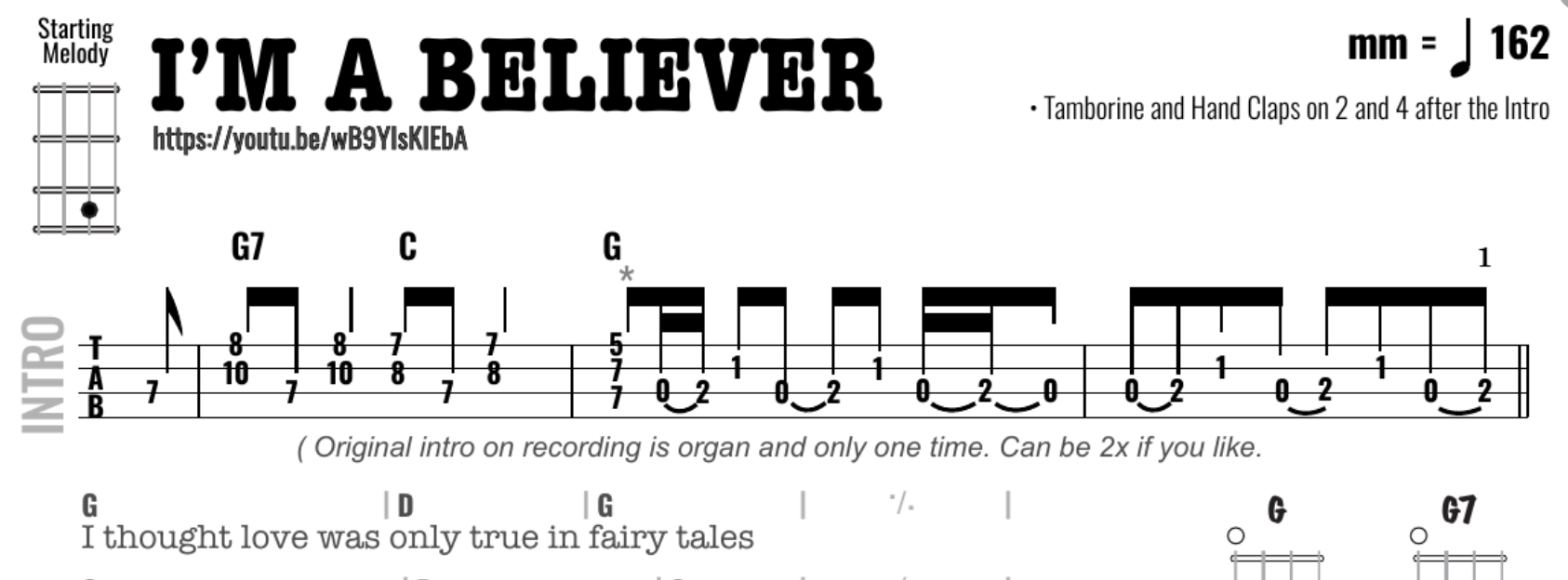
Checkout the I'm A Believer song chart below for all the lick, fills, and the solo.

The Daily Ukulele— 365 Songs for Better Living book.




Repeat of line 1.
The last measure of the above line is five (5) beats.

D.S. last time and fade
A Harmonic Analysis (RMA/HA) and its worksheet are intended to show the function of the chords, the harmonic principles used, the keys and tonalities the song explores. And, can be used for scale selections and chord and scale substitutions.
lead leadsheet.Minimal roadmap information such as repeats, fine, D.S., D.C., and codas has been used in preparing the worksheets to somewhat mirror the leadsheet in the Daily Ukulele book.
Yellow Book. You should start to recognize that 1st endings typically always return to a previous verse or an
 section. With a 2nd ending, a transition to a different part of the song, a
section. With a 2nd ending, a transition to a different part of the song, a  or chorus. Harmonic Principles are used for these repeats and transitions.
or chorus. Harmonic Principles are used for these repeats and transitions.- I'm A Believer is in 4/4, Common Time and the D Mixolydian Mode .
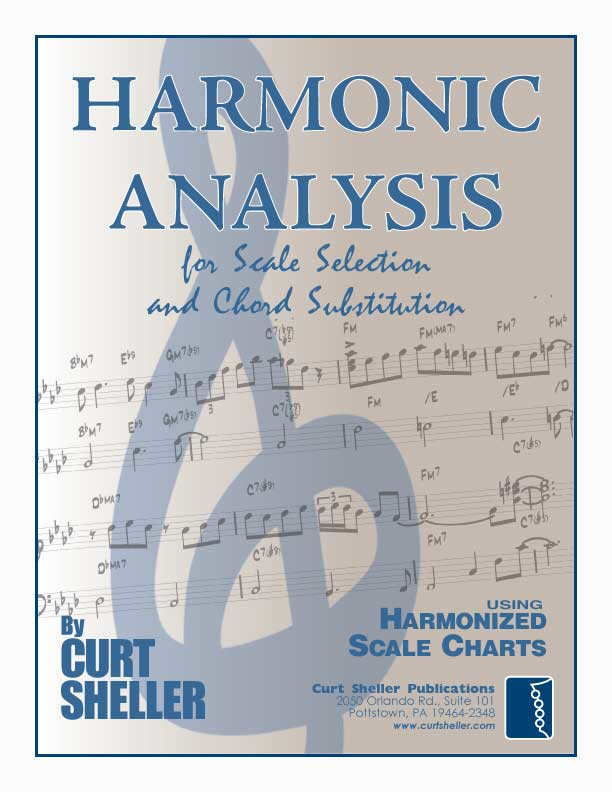
Contemporary Scales: Minor Pent: Minor Pentatonic, Pent: Major Pentatonic, Blues,
Scale/Mode Names: Ion: Ionian (Major), Dor: Dorian (Minor), Phrygian: Phrygian, Lyd: Lydian, Mix: Mixolydian (Dominant), Aeol: Aeolian (Natural Minor), Loc: Locrian
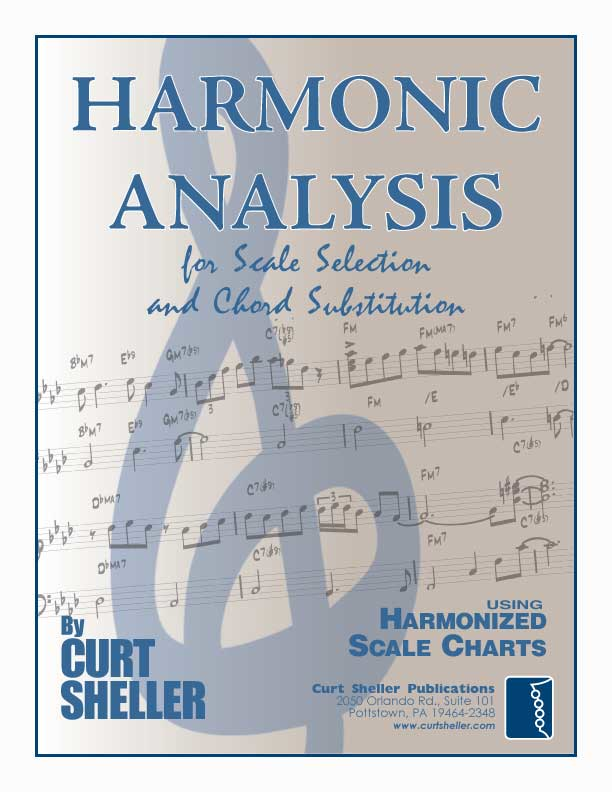

The original Monkees hit recording is in the G Mixolydian.
The I'm A Believer uke group chart I created teh Funky Frets Music Store Ukulele Meetup Group has the Intro, Fills , and Wipeout
influenced solo on the chart.

Checkout the I'm A Believer song chart below for all the lick, fills, and the solo.
- (wikiwand) I'm A Believer
- I'm A Believer •
Related Lessons, Videos, Lesson Series, Songs, Books & Reference Charts, Resources & Assets, Workshops are below.

Harmonic Analysis (HA), also known as the study of chord relationships, is the method used to identify the harmonic role of chords within a chord progression or song. A chord progression refers to a sequence of chords, with each chord having a root note and belonging to a specific chord type. The function of a chord within a particular scale's tonality is determined by its relationship to that scale.
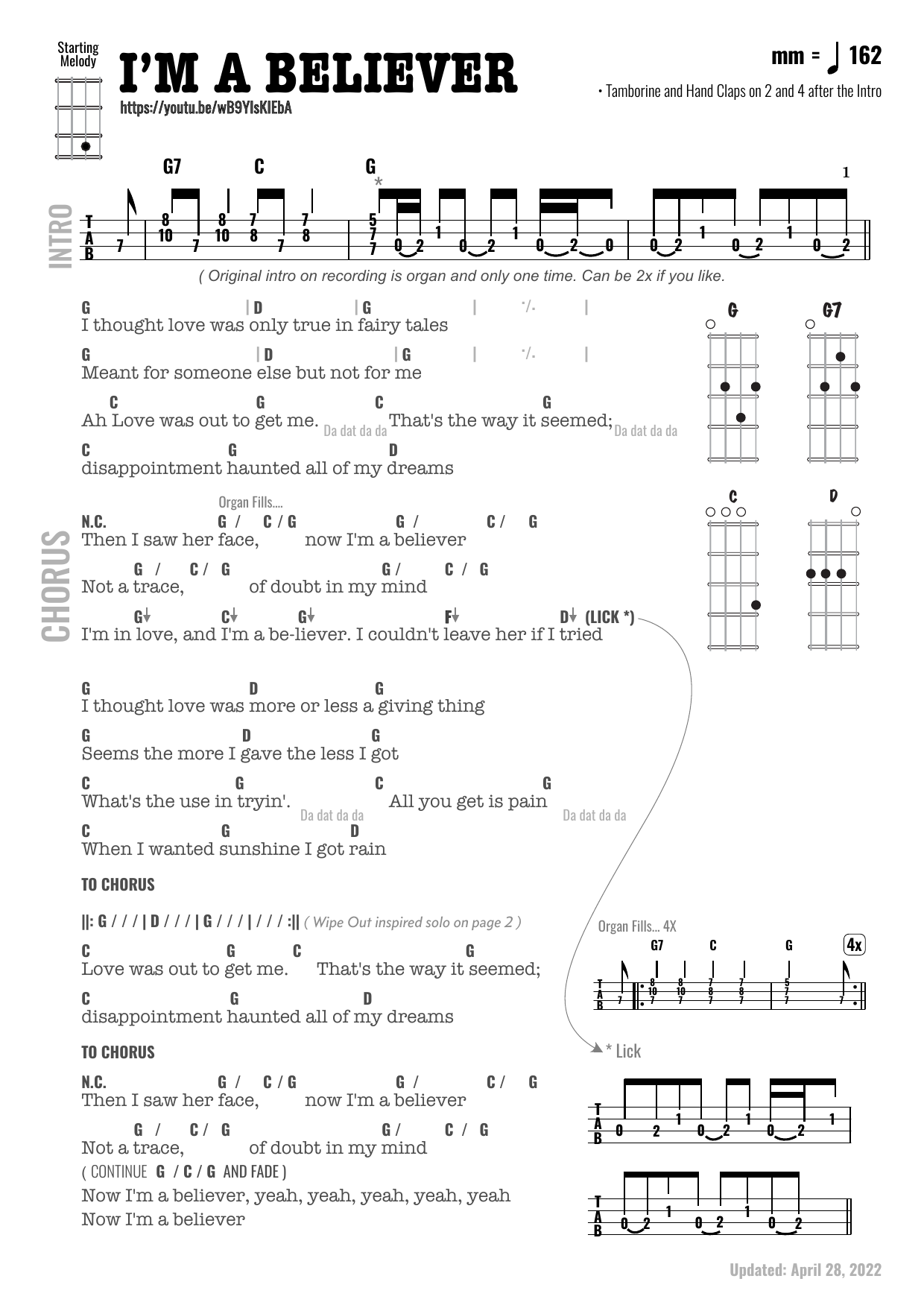
"I'm a Believer" is a song written by Neil Diamond and recorded by the Monkees in 1966 with the lead vocals by Micky Dolenz. The single, produced by Jeff Barry, hit the number-one spot on the U.S. Billboard Hot 100 chart for the week ending December 31, 1966, and remained there for seven weeks becoming the last No. 1 hit of 1966 and the biggest-selling single for all of 1967.
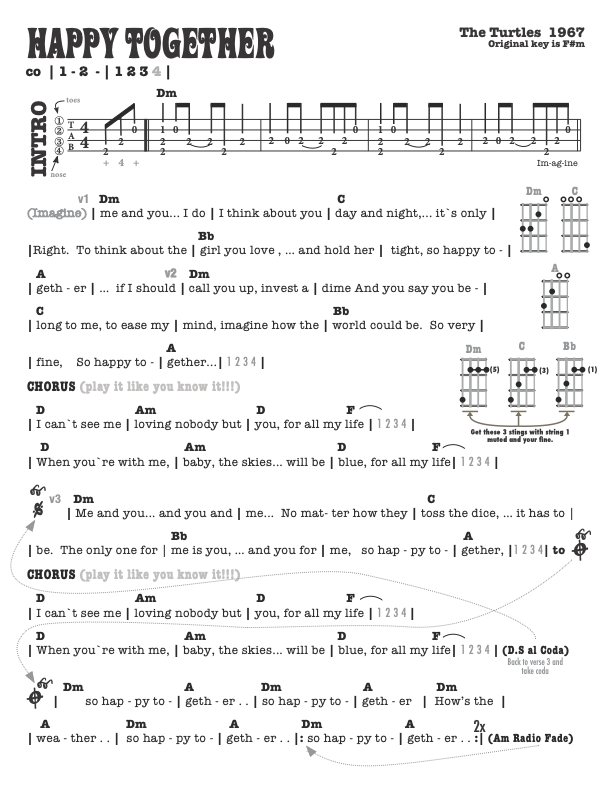
"Happy Together" is a song written by Garry Bonner and Alan Gordon and recorded by American rock band the Turtles. It was released as a single, b/w "Like the Seasons", in January 1967, and peaked at number one on the US Billboard Hot 100, becoming the band's first and only chart-topper there. The song also reached the top 20 in diverse countries, including number 2 in Canada and number 12 in the UK. It was later included on their third studio album, Happy Together (1967).

Harmonic Analysis is the understanding of the functional sequence of chords. It is the process used to analyze the harmonic structure of a progression, song or composition. This analysis is then used to make scale selections for improvisation and chord substitution.

Strum a different song every day with easy arrangements of 365 of your favorite songs in one big songbook! The Daily Ukulele features ukulele arrangements with melody, lyrics and uke chord grids and are in ukulele-friendly keys that are particularly suited for groups of one to one hundred to play and sing.

Finally, learn the names of the notes of the ukulele fingerboard in C tuning .

Learn the six fingering principles to navigating the ukulele fingerboard. Fingering is one of the most universal topics. Book: Six Secrets of the Ukulele Fingering

Harmonic Analysis is the understanding of the functional sequence of chords. It is the process used to analyze the harmonic structure of a progression, song or composition. Book: Harmonic Analysis for Scale Selection and Chord Substitution

Learn to read single note melodies in the first/open position is a lot easier than you might think. Book: Ukulele – Reading Music Series – Primer

An organized collection of daily practice and reference material for the contemporary ukulele player for developing the vocabulary and knowledge necessary for single note playing. Book: Daily Practice Material for the Contemporary Ukulele
Checkout the Books & Reference Charts for additional Handy, Dandy Reference Charts.

Ukulele Fingerboard Chart for C Tuning, Low or High G – G C E A

Ukulele Fingerboard Chart for G Tuning, Low or High A – D G B E

A handy reference chart of all 15 major and relative minor key signatures. US Letter 8.5 x 11 sized (ANSI-A), A4
Checkout the Books & Reference Charts for additional Handy, Dandy Reference Charts.







.jpg)